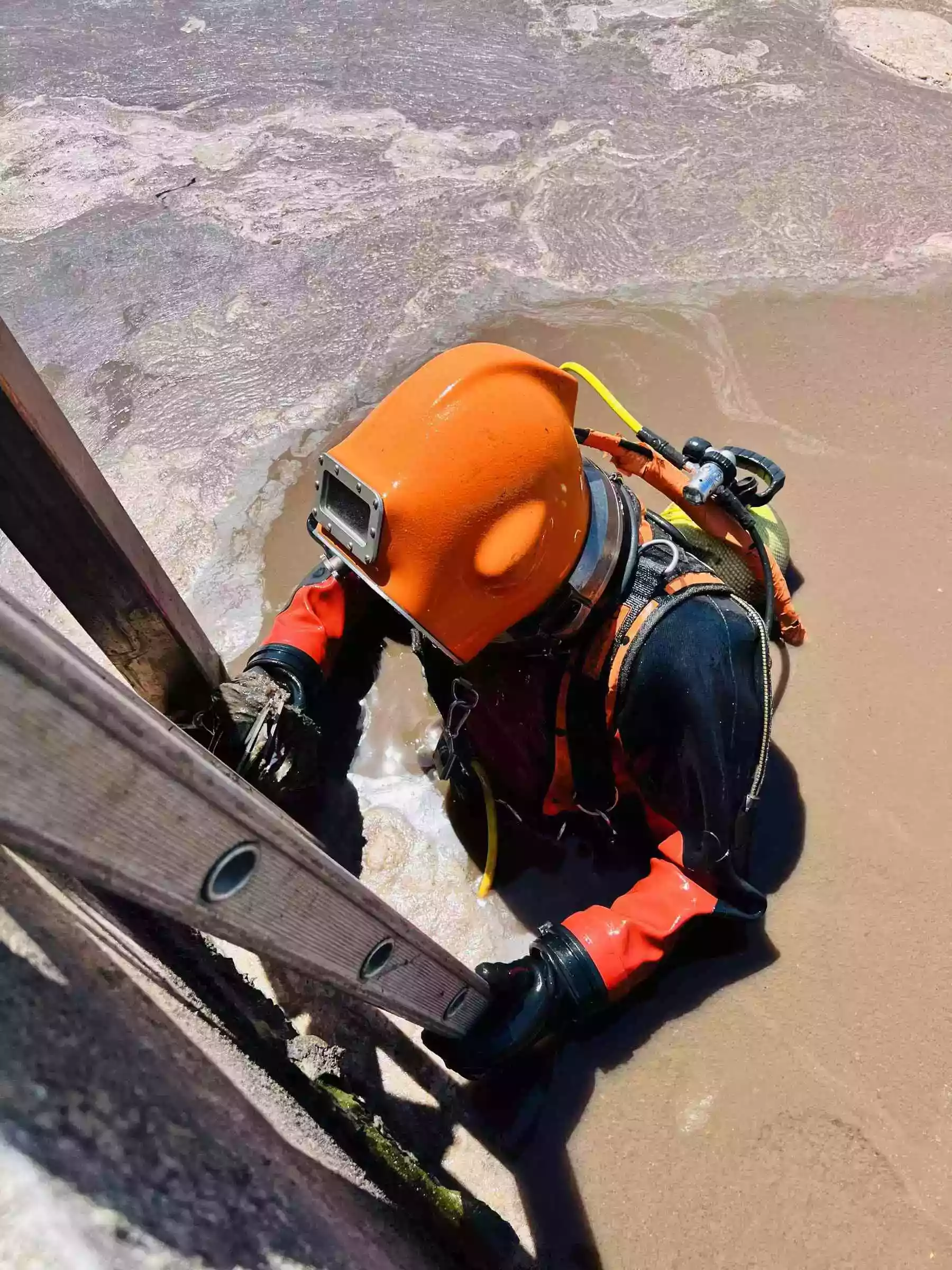How to make a good underwater inspection? The best practices of maritime experts

Underwater inspection is an essential step in ensuring the safety, performance and sustainability of maritime and port infrastructures. Whether for a dock, a pipeline, an embankment or an offshore installation, these inspections require a rigorous technical expertise, a fluid coordination between surface and background, and a perfect mastery of standards.
With CREOSEA, we intervene throughout the inspection cycle: from mission preparation to the drafting of the technical report, including the supervision of diving teams and the analysis of the data collected. Our engineers and expert divers combine field experience and industrial methodology to ensure reliable, traceable inspections that comply with regulatory requirements.
Understand the context and challenges of underwater inspections
One underwater inspection consists in observing, measuring and documenting the condition of a submerged structure (port structures, outfalls, piles, moorings, shells, etc.). These operations make it possible to detect degradations, to anticipate structural risks and to plan maintenance work.
The challenges are multiple:
- Security : avoid collapses or technical incidents.
- Operational availability : limit operational interruptions.
- Cost prevention : detect anomalies early to reduce heavy repairs.
- Regulatory compliance : comply with the requirements of port and maritime authorities.
In a context of aging infrastructures and the strengthening of HSE standards, regular inspections are becoming a strategic imperative for public and private project owners.
Methodology and best practices for a successful inspection
An effective underwater inspection is based on rigorous preparation and structured methodology. Here are the main recommended steps:
- Prior analysis of the site
- Study the plans, currents, depths and access constraints. Determine the human and material resources required (divers, ROVs, sensors).
- Detailed inspection plan (PDI)
- Define the areas to be checked, the examination methods (visual, NDT, photogrammetry), the evaluation criteria and the expected report format.
- Direct or assisted visual inspection
- Perform observations using commercial divers or ROVs depending on the depth, turbidity and risks present.
- Registration and traceability
- Documenting anomalies with photos, videos and accurate measurements. Ensure the geolocation of inspection points.
- Technical report and recommendations
- Provide a clear, illustrated, and actionable report integrating findings, measures and proposals for corrective action.
With CREOSEA, each mission is supervised by a inspection engineer guaranteeing technical consistency between the field and the customer's requirements.
Safety, regulations and quality: the pillars of reliable inspection
Safety is at the heart of any underwater operation. An inspection can only be successful if it meets hyperbaric standards, HSE procedures and quality standards in force.
Key requirements:
- Regulated hyperbaric supervision (French Labor Code or of the country concerned, orders relating to work in a hyperbaric environment).
- Qualified personnel with Surface Supplied Offshore Air Diver (IDSA Level 3), qualified and medically fit.
- Compliance with diving, emergency and decompression procedures.
- Internal quality control reports, photos and technical reports before delivery.
CREOSEA is implementing an integrated quality system based on international standards (IMCA, ISO 9001, NF EN ISO 9712 for non-destructive testing) in order to guarantee the reliability and traceability of the results.
Feedback and field supervision: the added value of CREOSEA
Our interventions cover different environments:
- Ports and embankment (inspection of stakes, joists, draughts).
- Outfalls and pipes (integrity check, identification of obstructions or leaks).
- Offshore structures (anchors, cables, metal structures).
In the field, CREOSEA promotes an collaborative and operational approach :
- Direct supervision diving or ROV teams.
- Real-time control images and measurements via surface screens.
- Integration of digital tools : 3D photogrammetry, high resolution ROV inspection, marine drones.
- Interactive reporting for a transparent follow-up with the customer.
Each mission allows capitalize on field experience to improve protocols and increase the reliability of future inspections.
Conclusion: rigor and trust, signatures of CREOSEA
Succeeding in an underwater inspection means combining safety, precision and expertise. It is also knowing how to translate field observations into concrete decisions for the maintenance and sustainability of structures.
With CREOSEA, you benefit from a reliable technical partner, rooted in the operational reality of the maritime and underwater world. Our teams support your projects with transparency, responsiveness and quality commitment.
CREOSEA — Expertise in maritime and underwater operations, at the service of the performance of your infrastructures.


